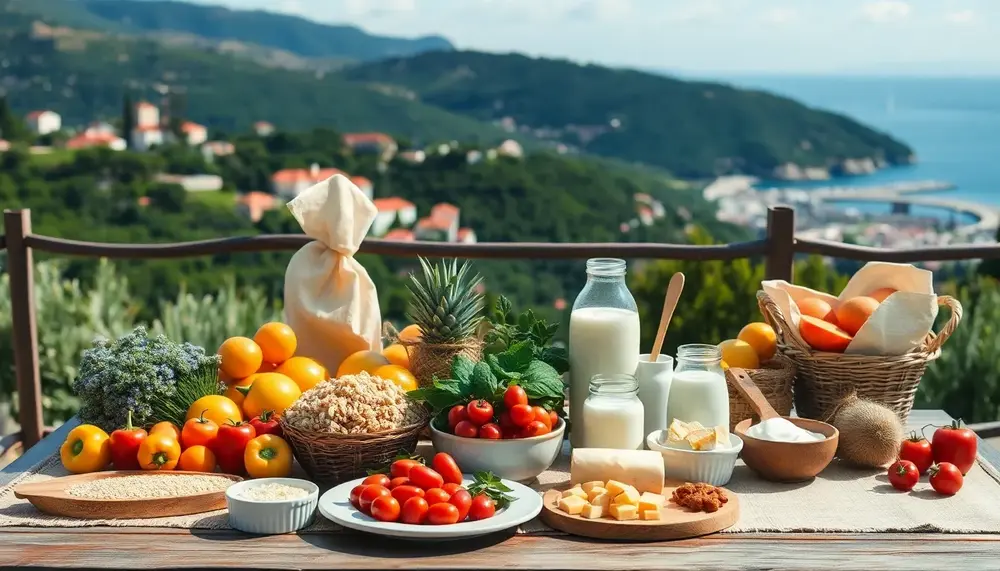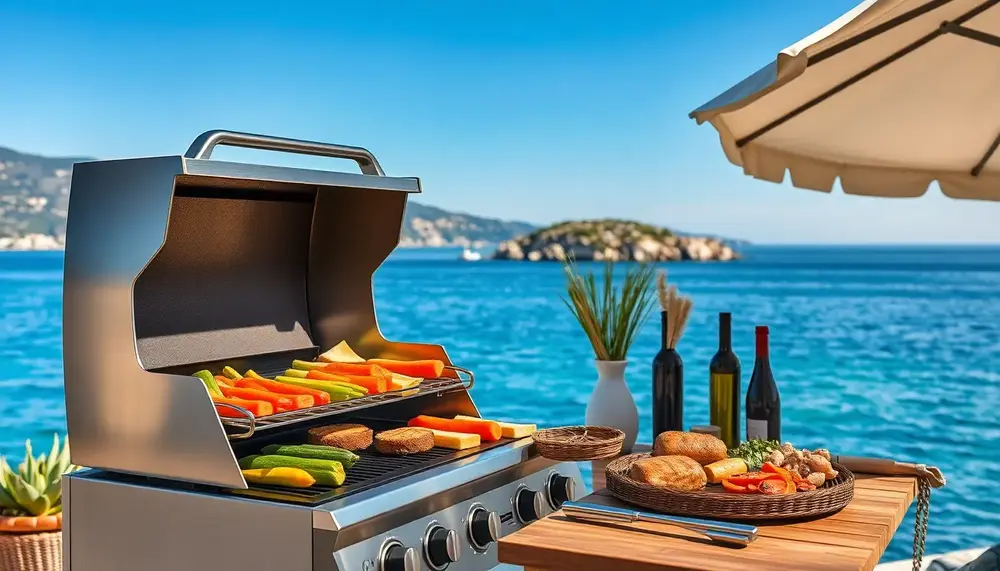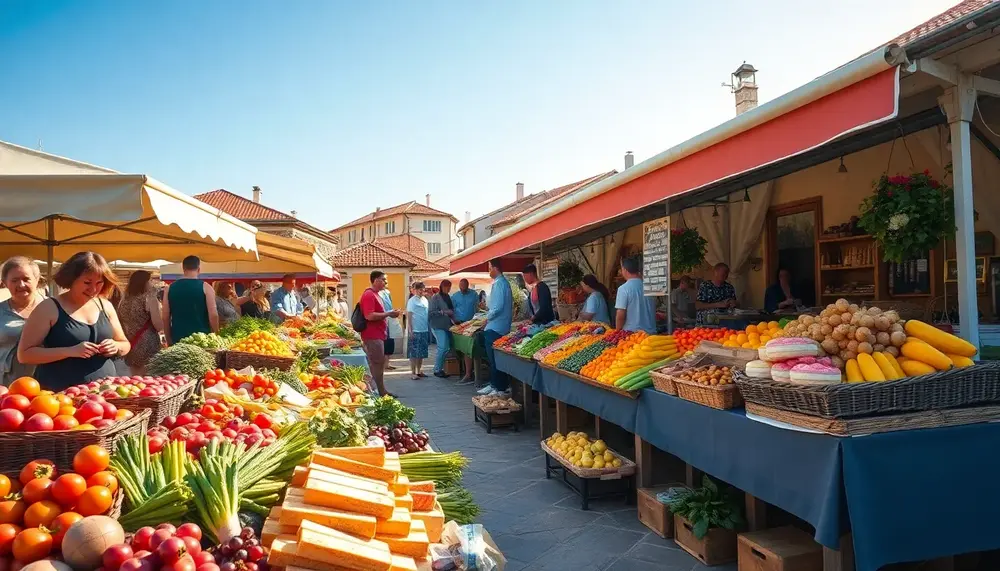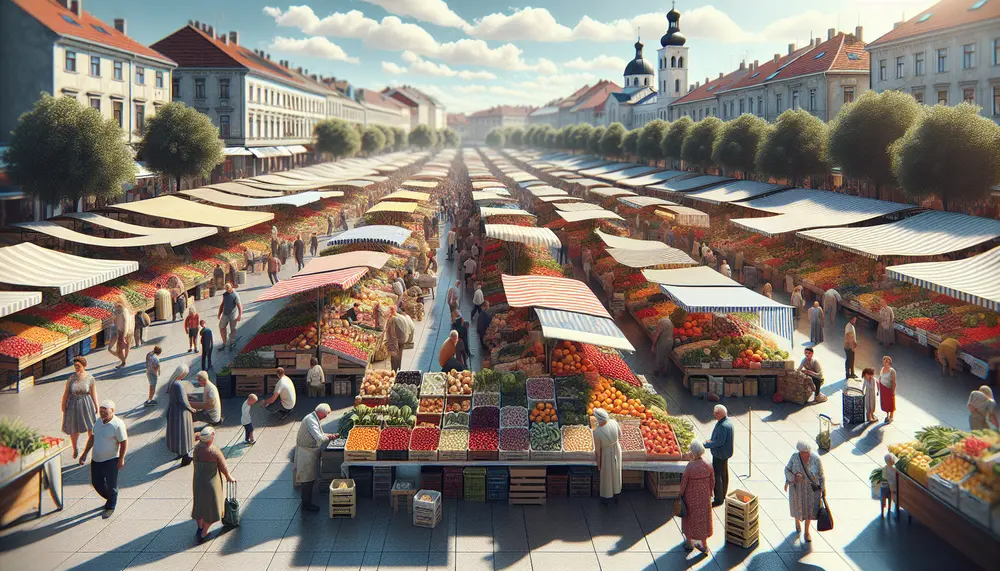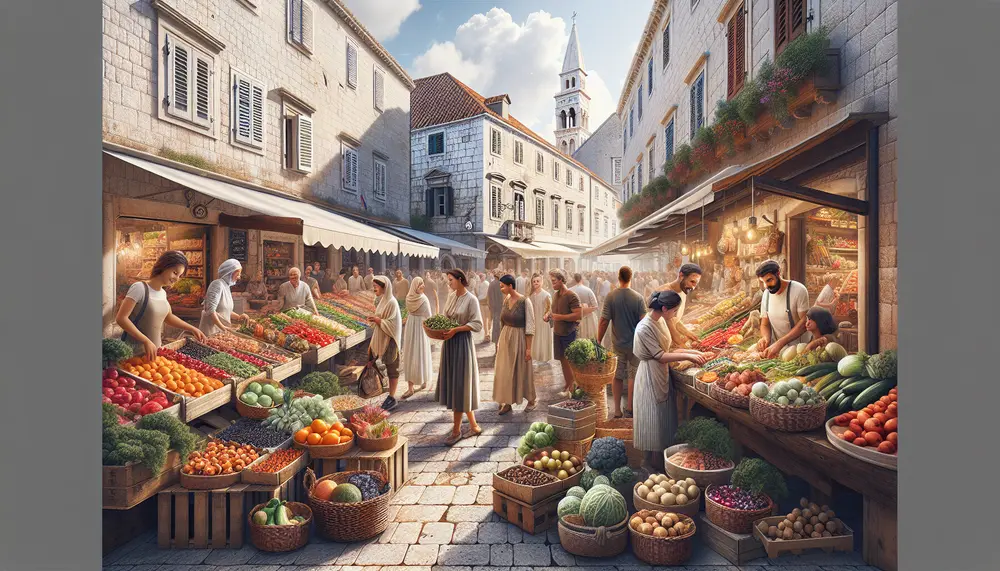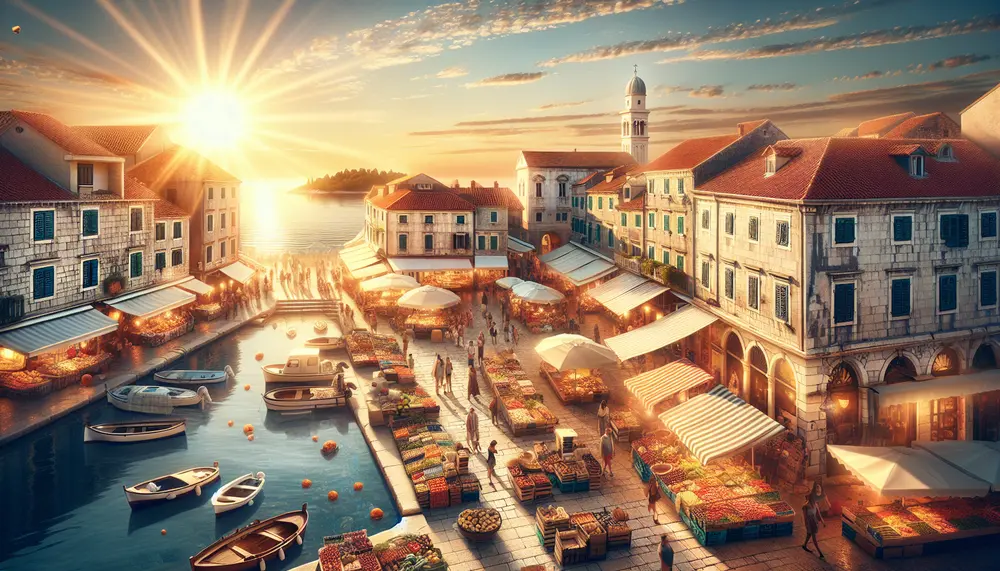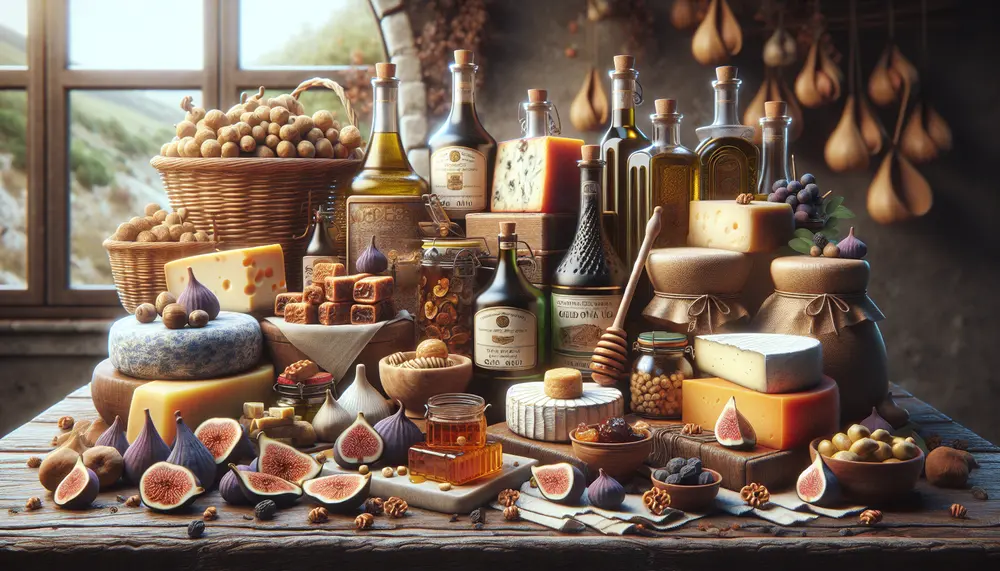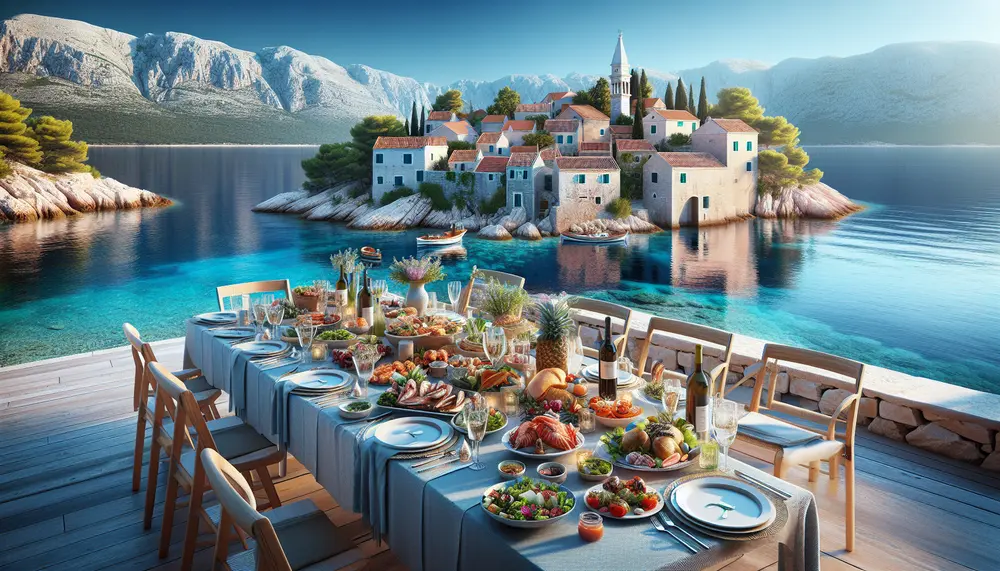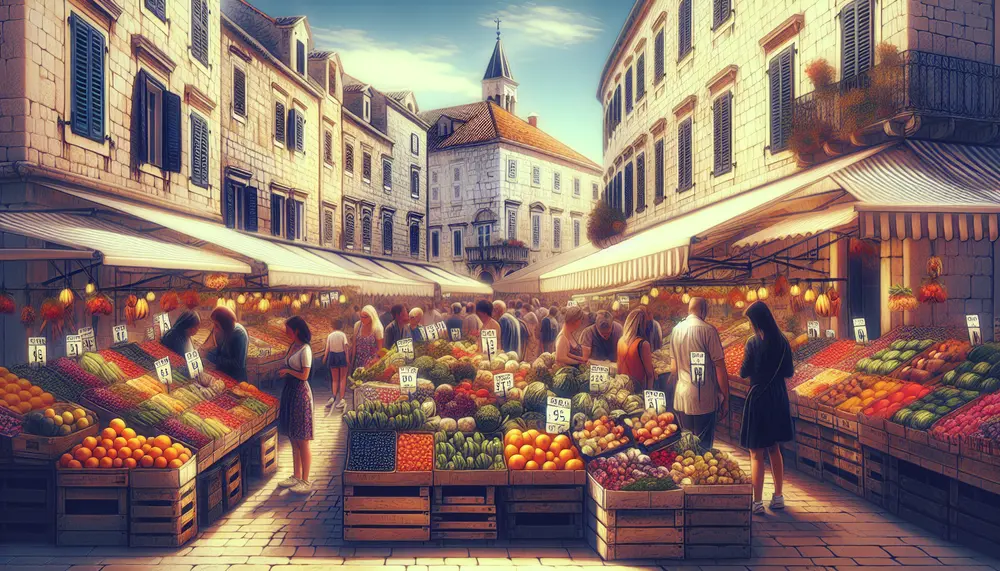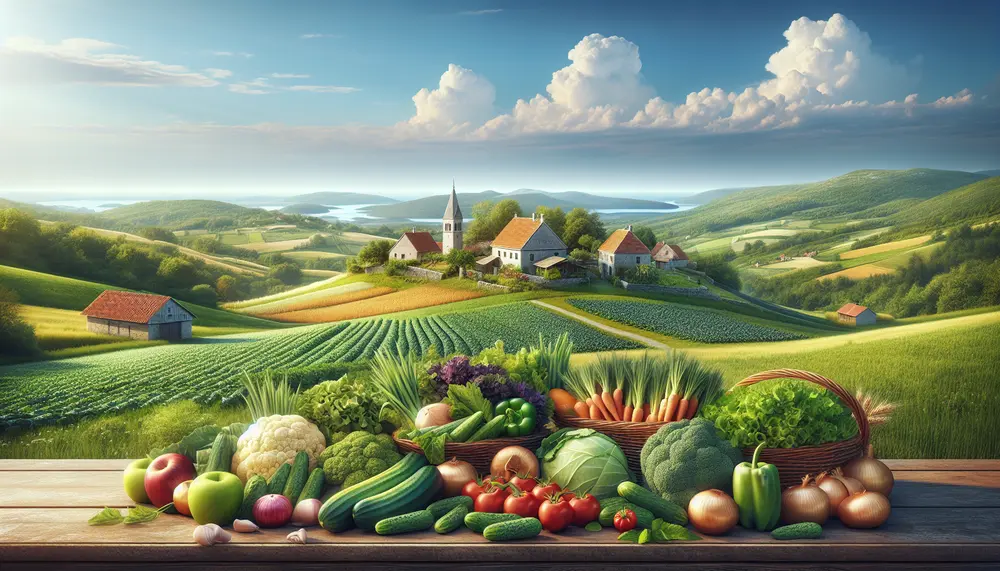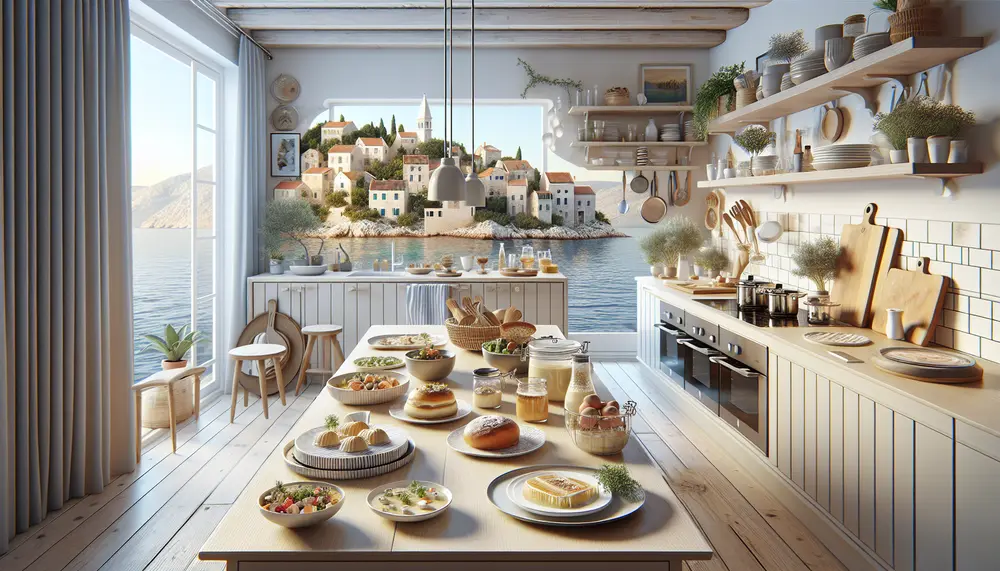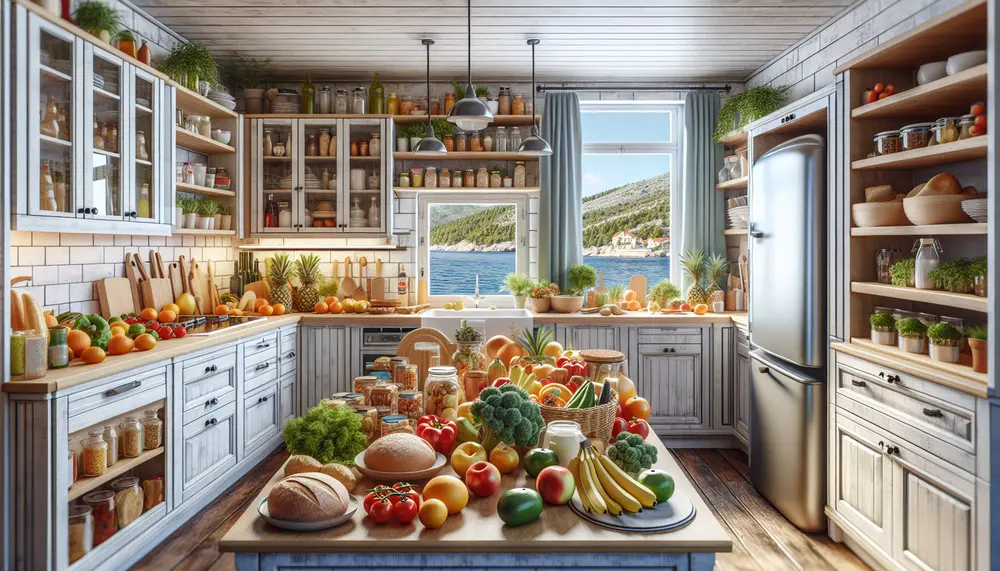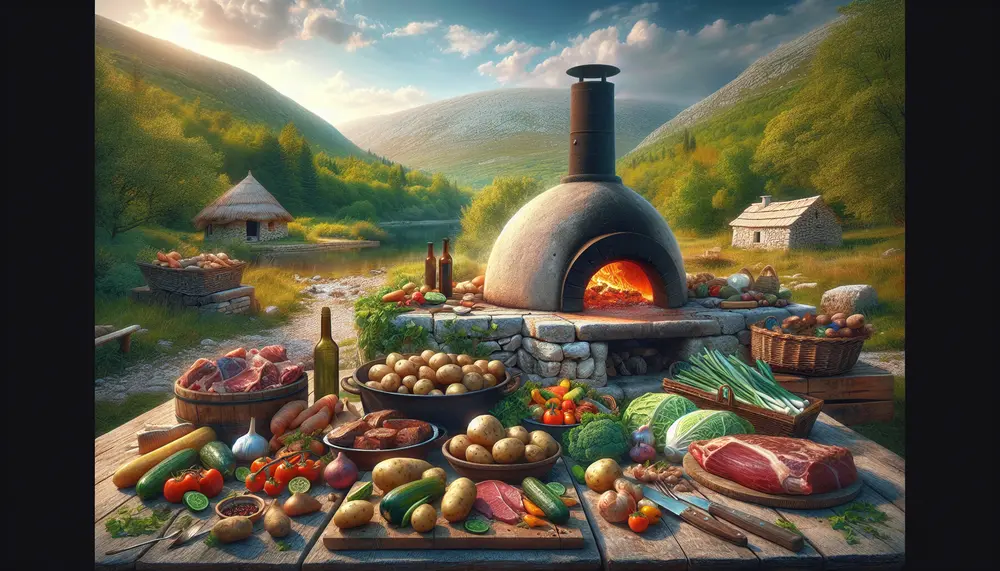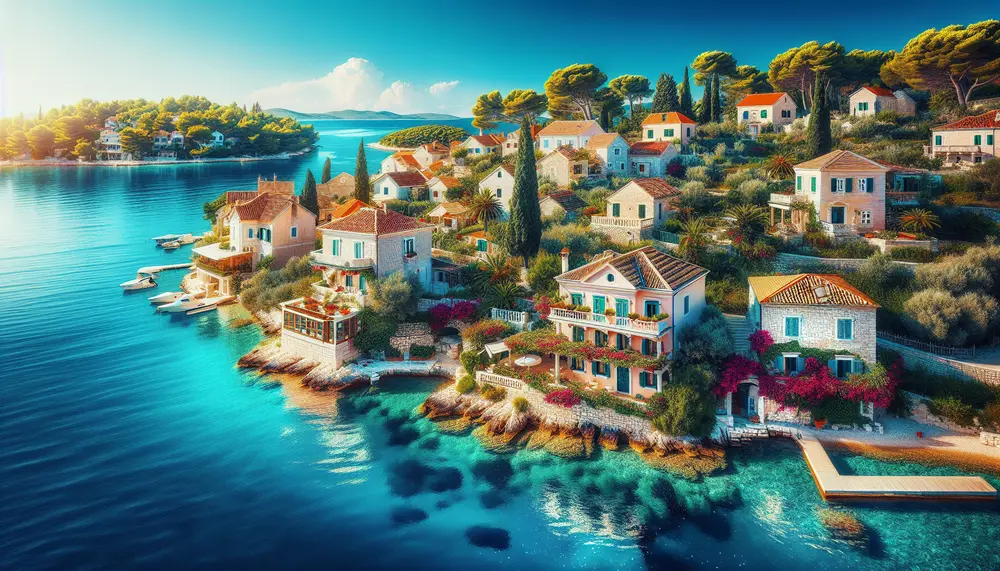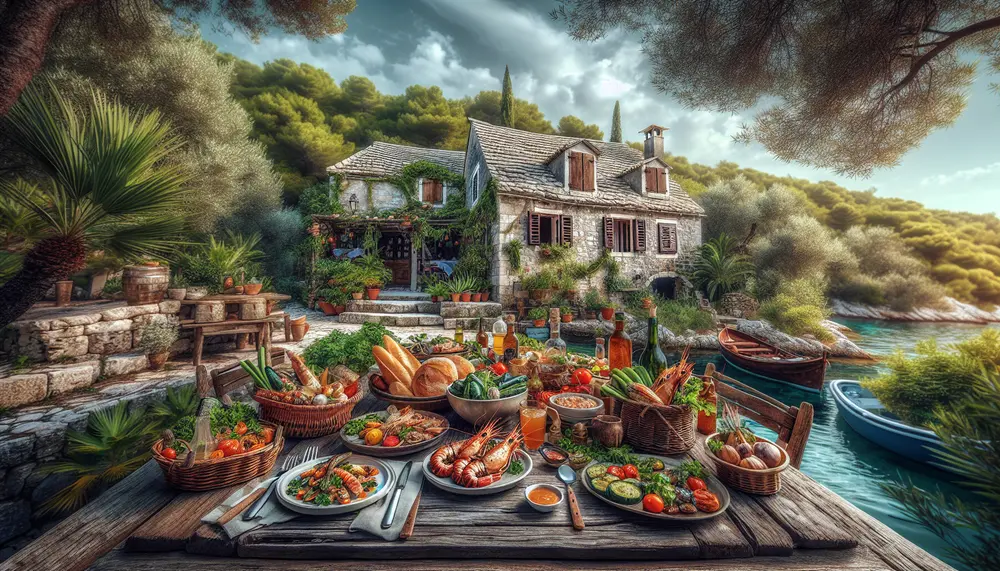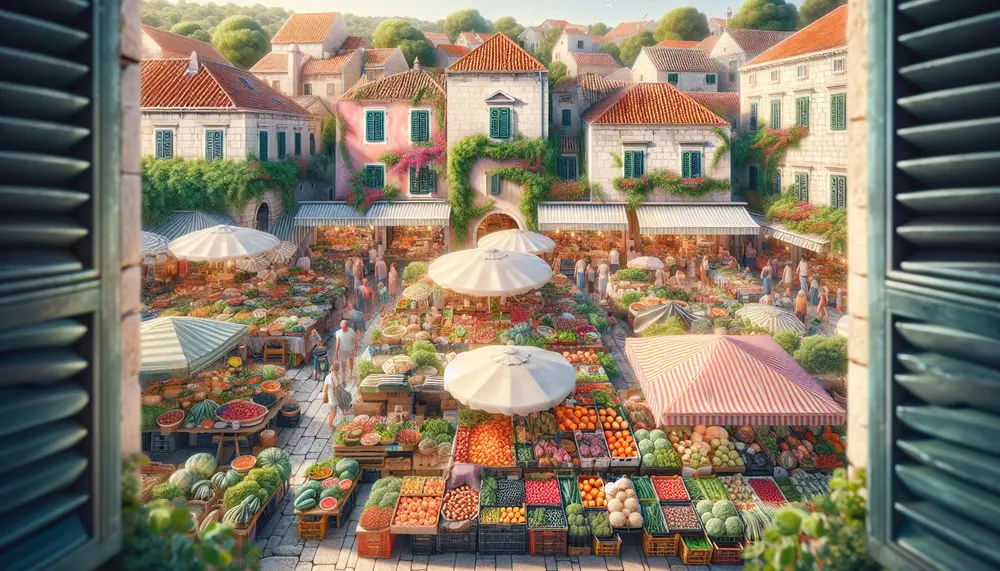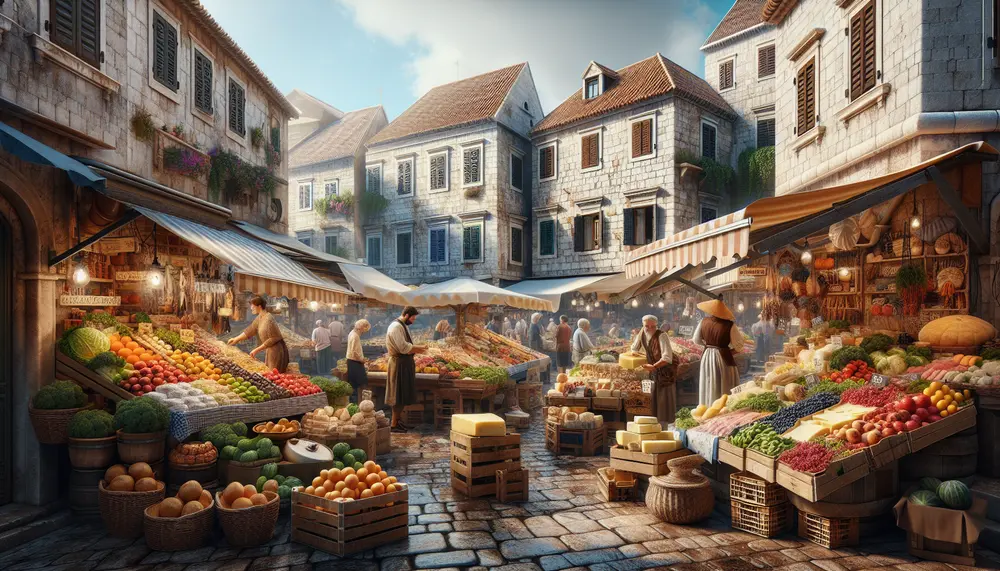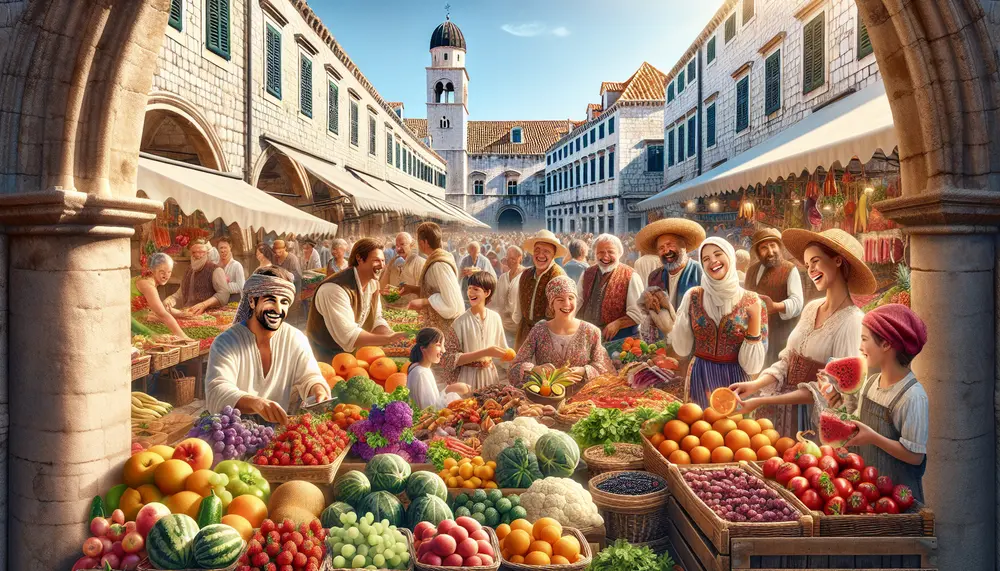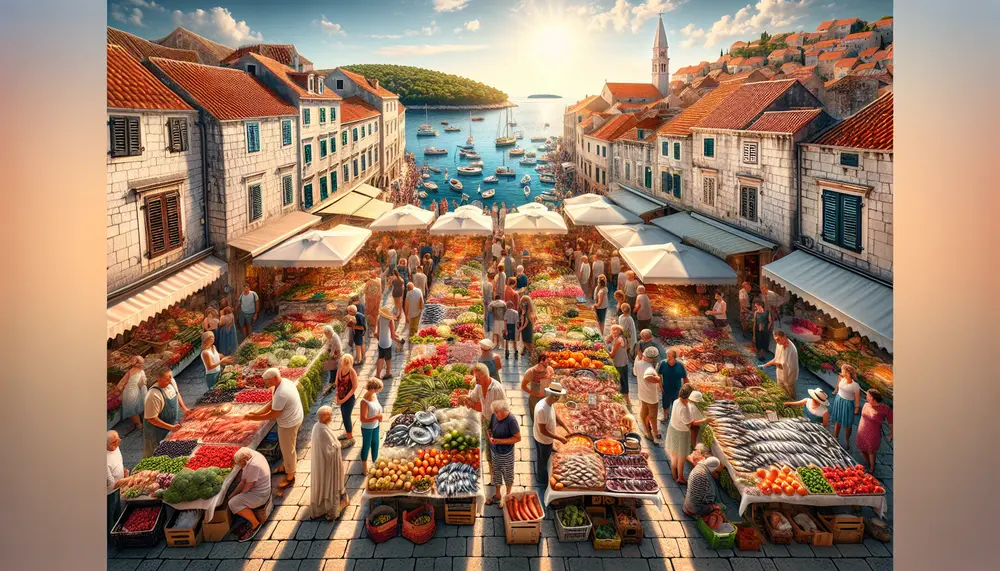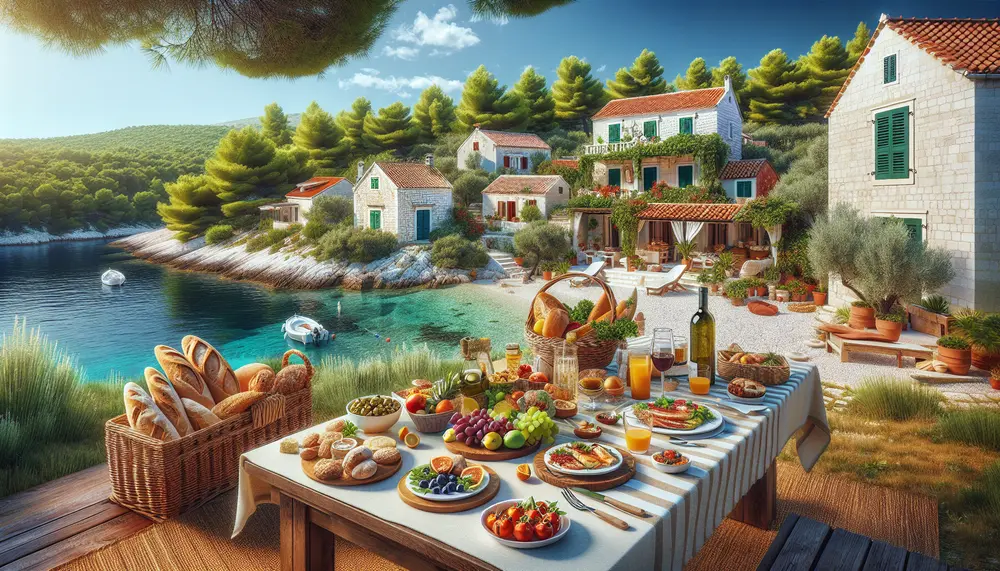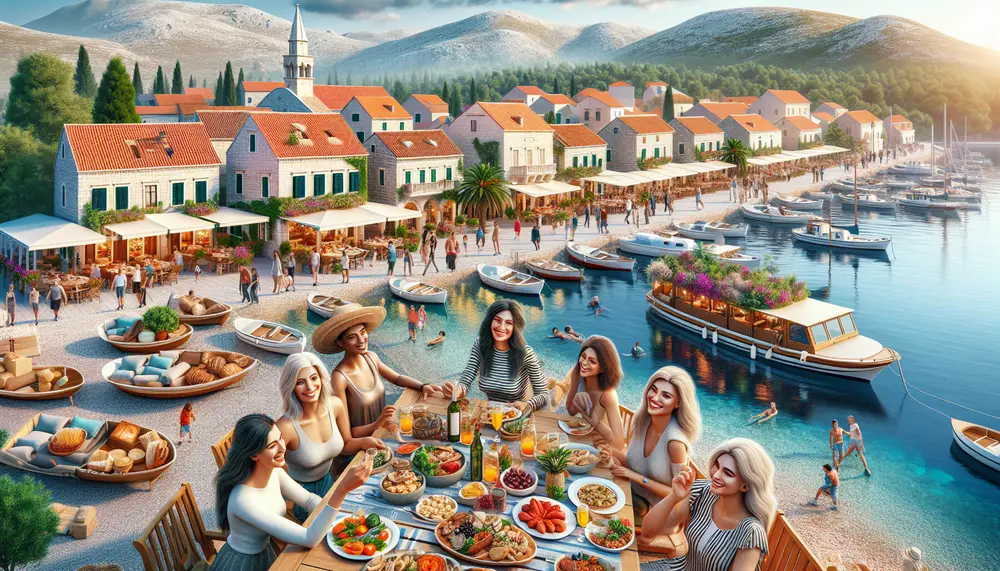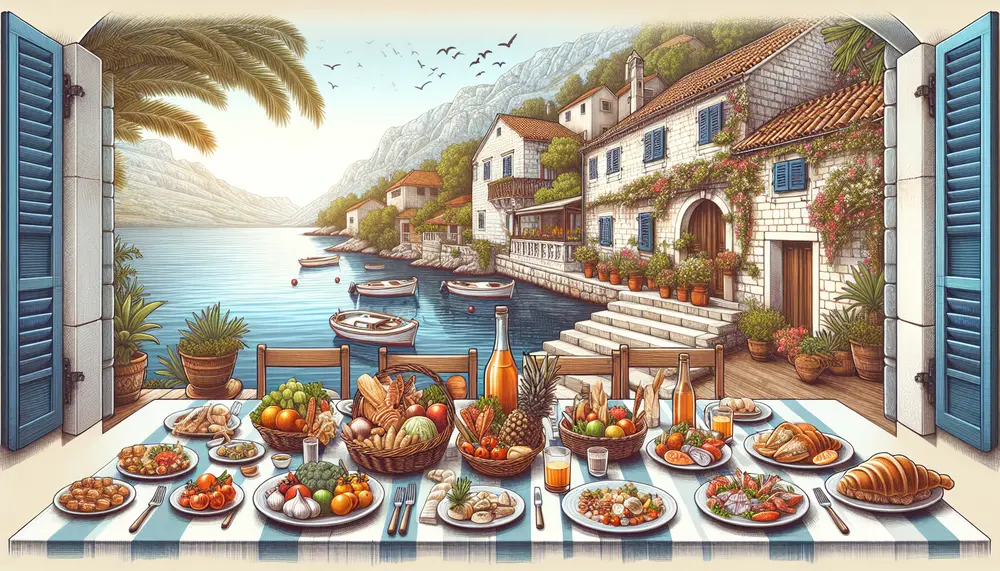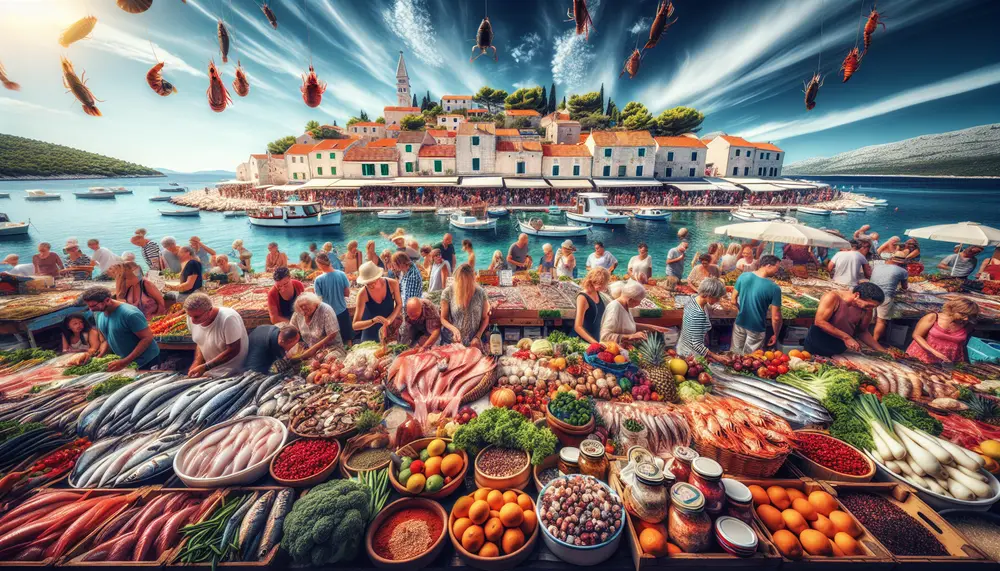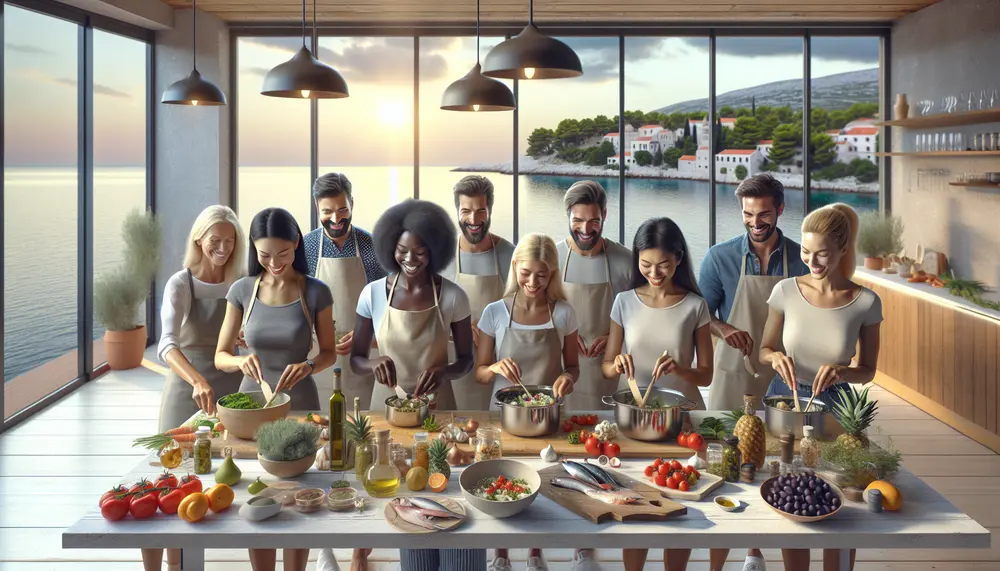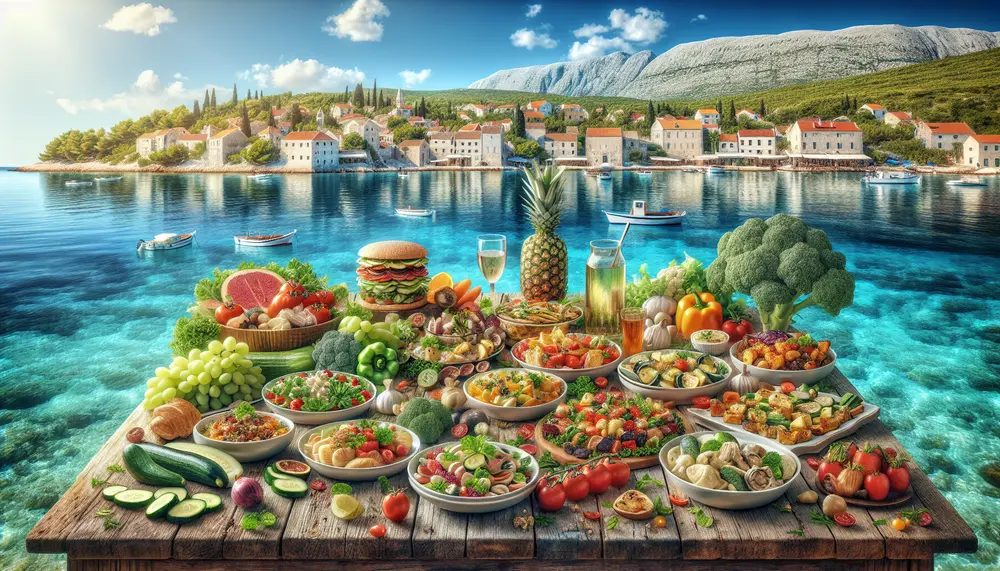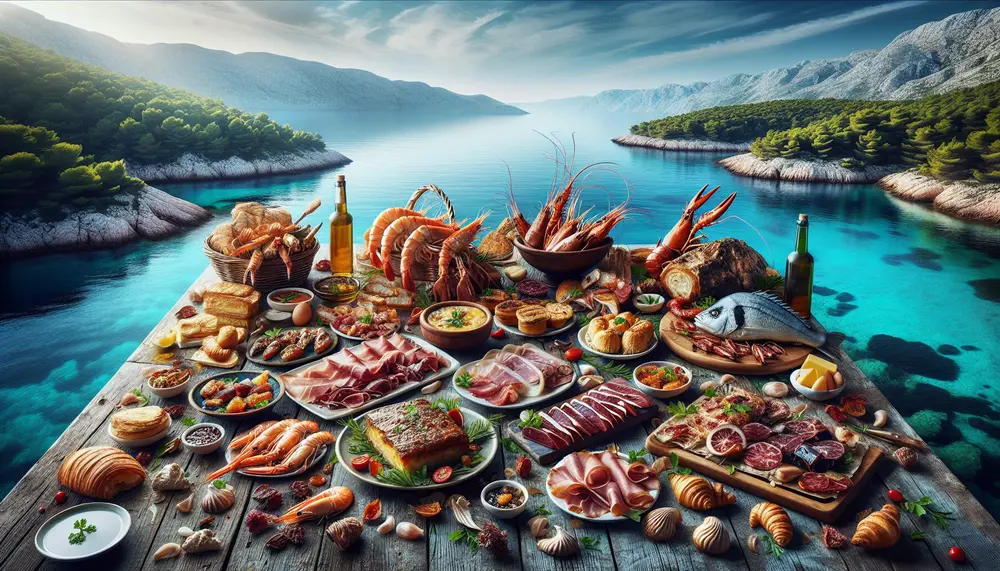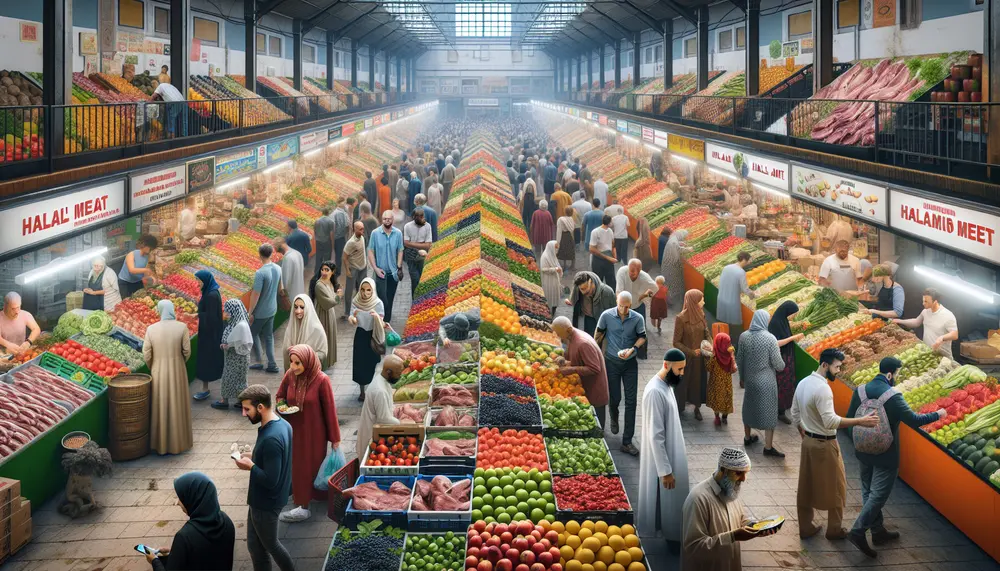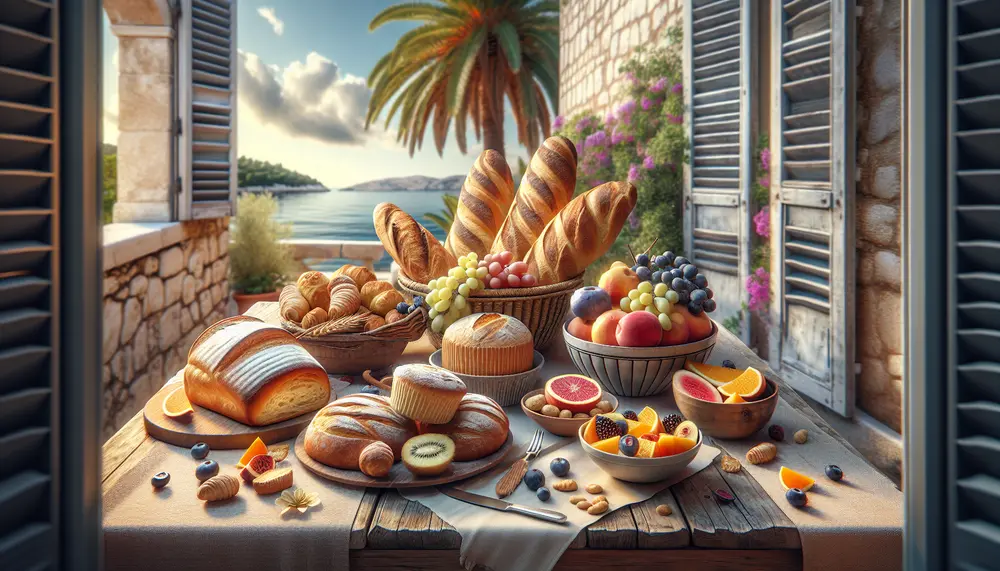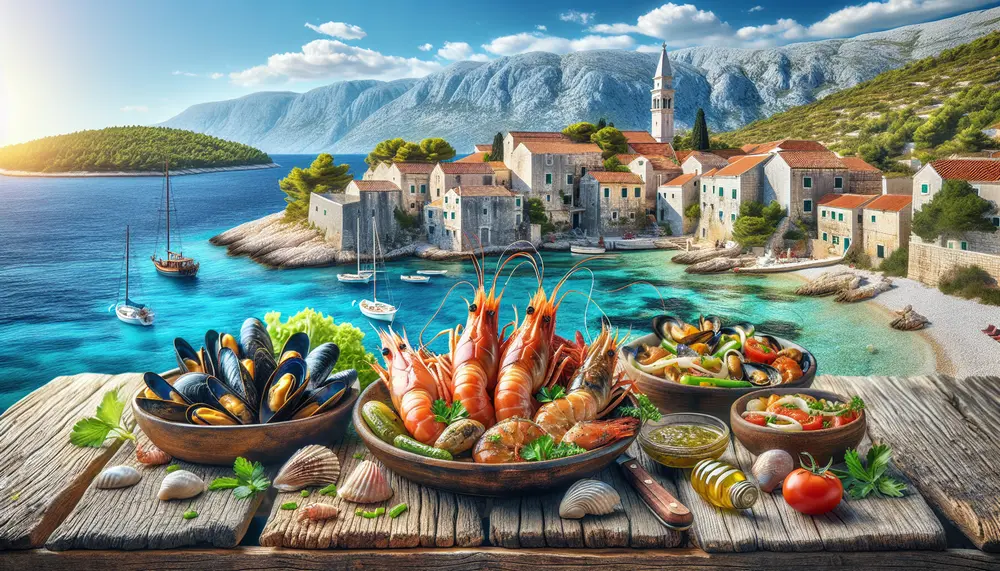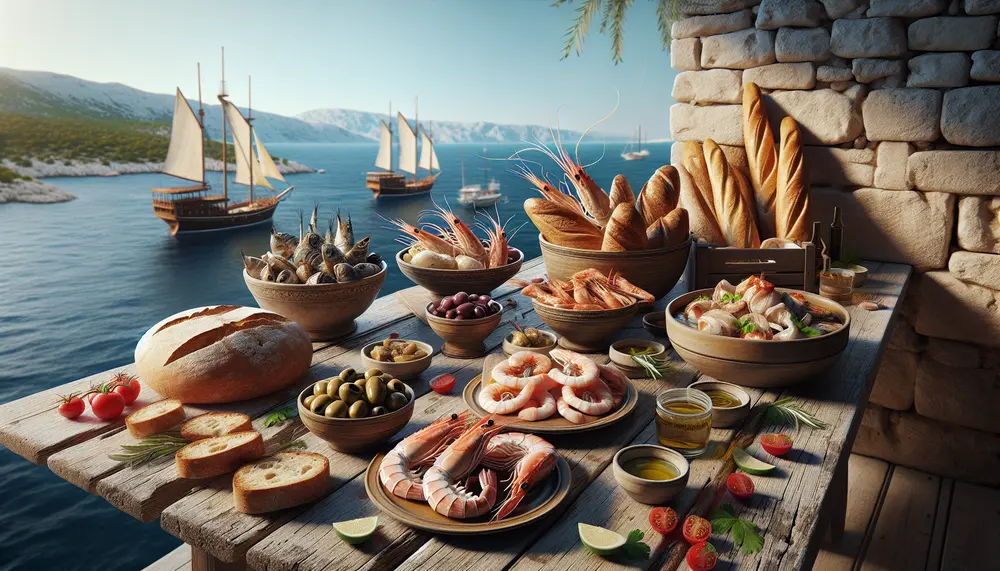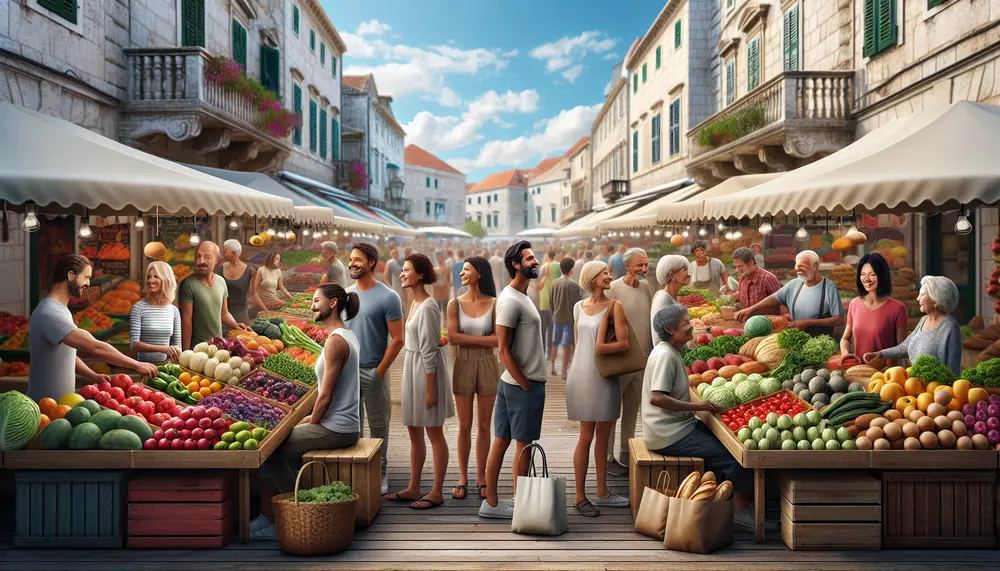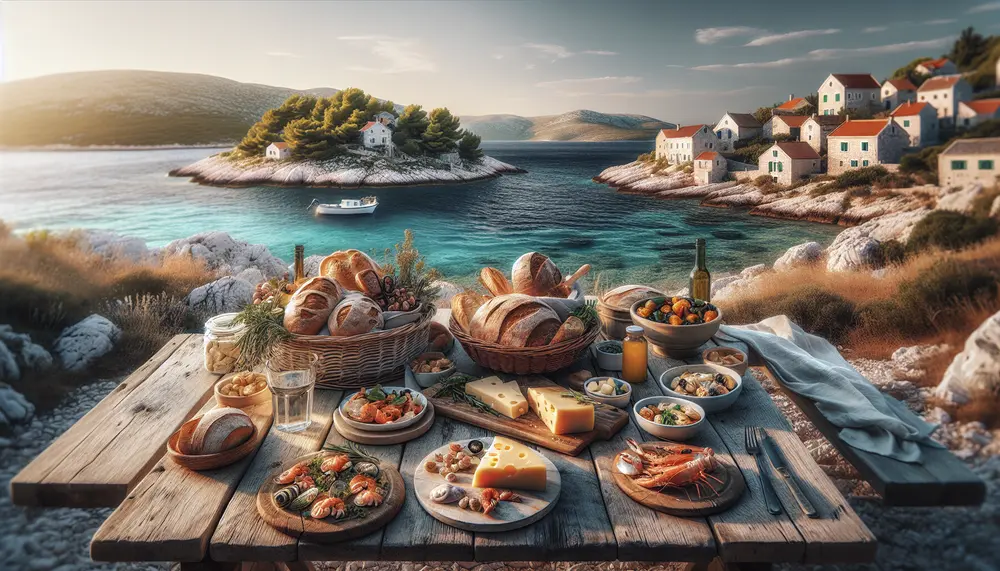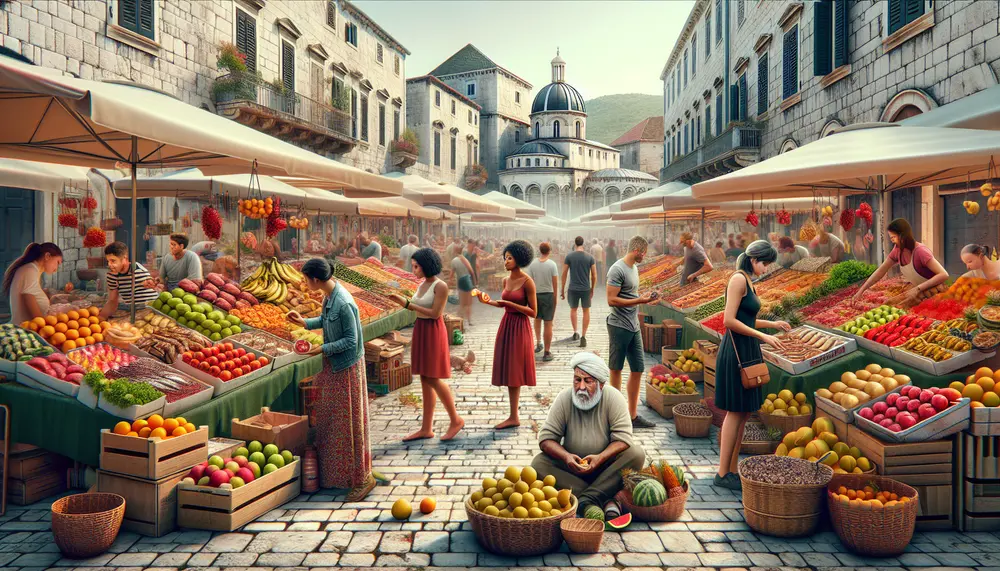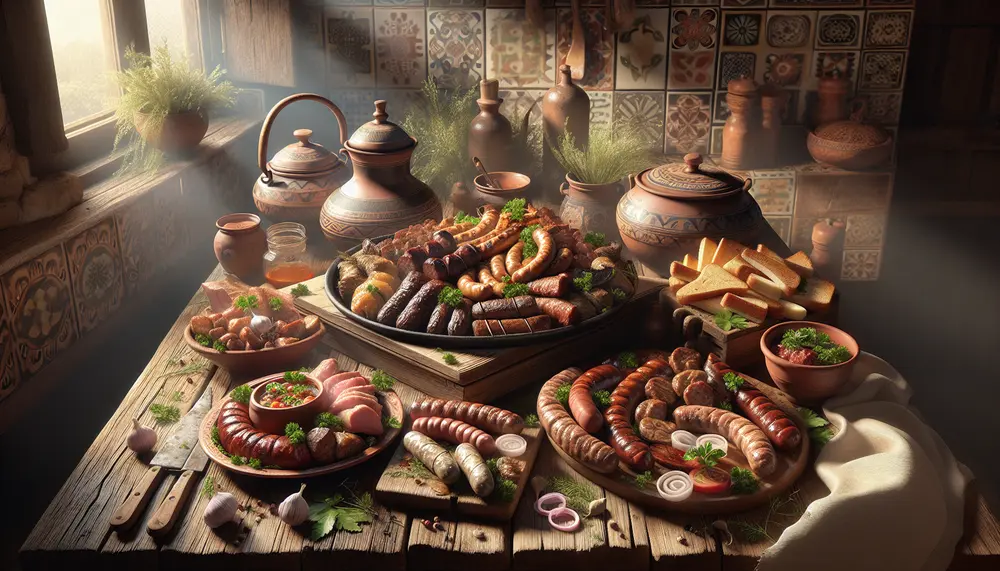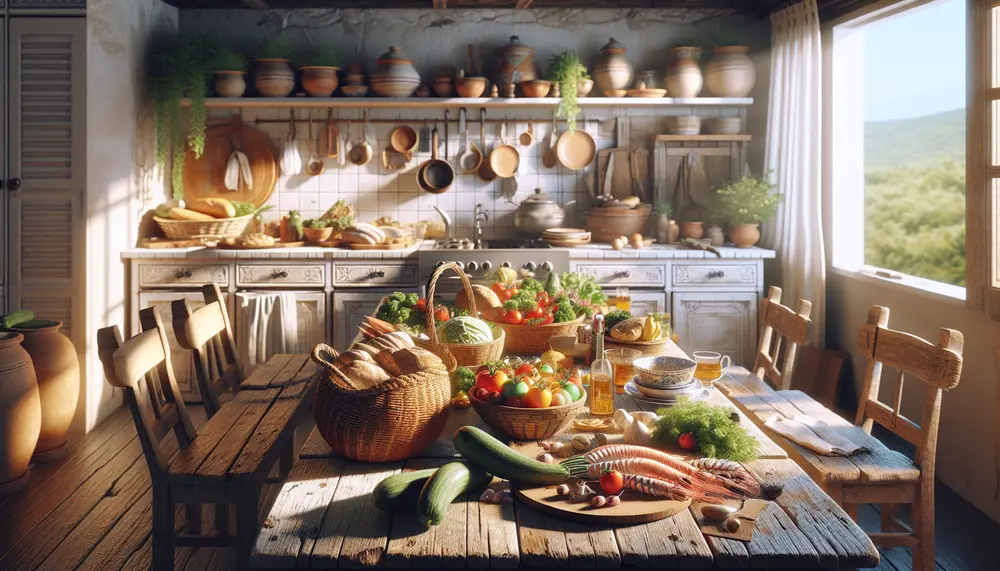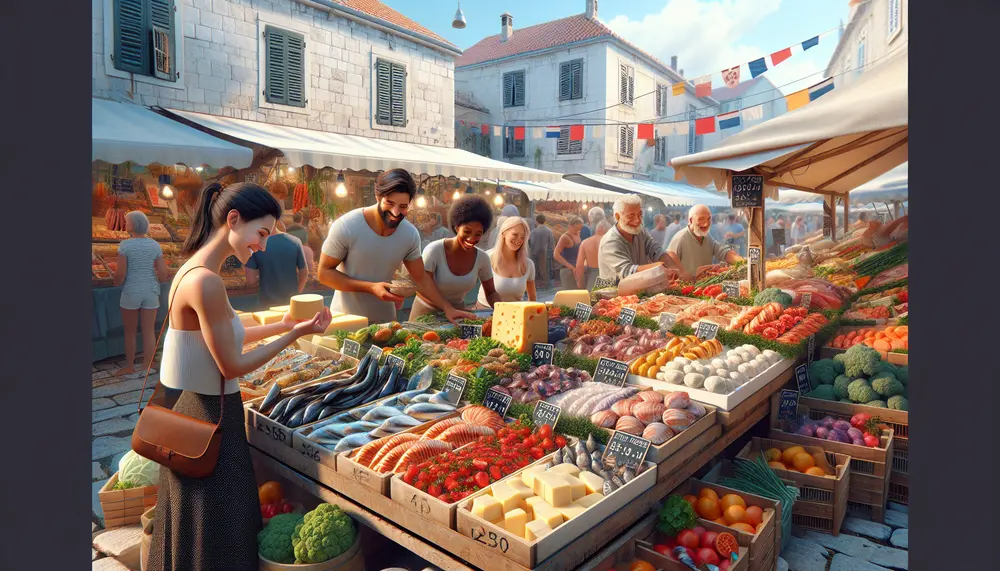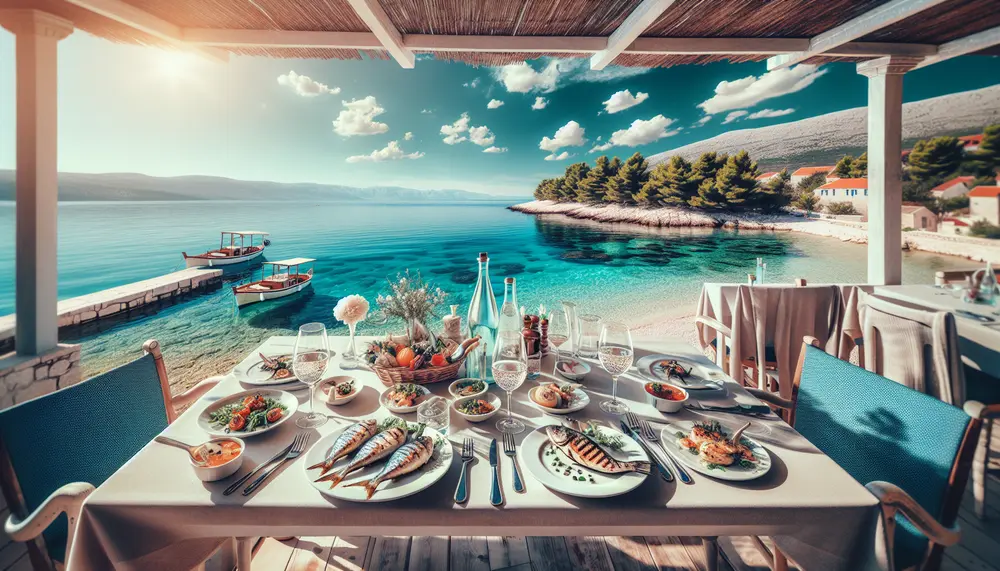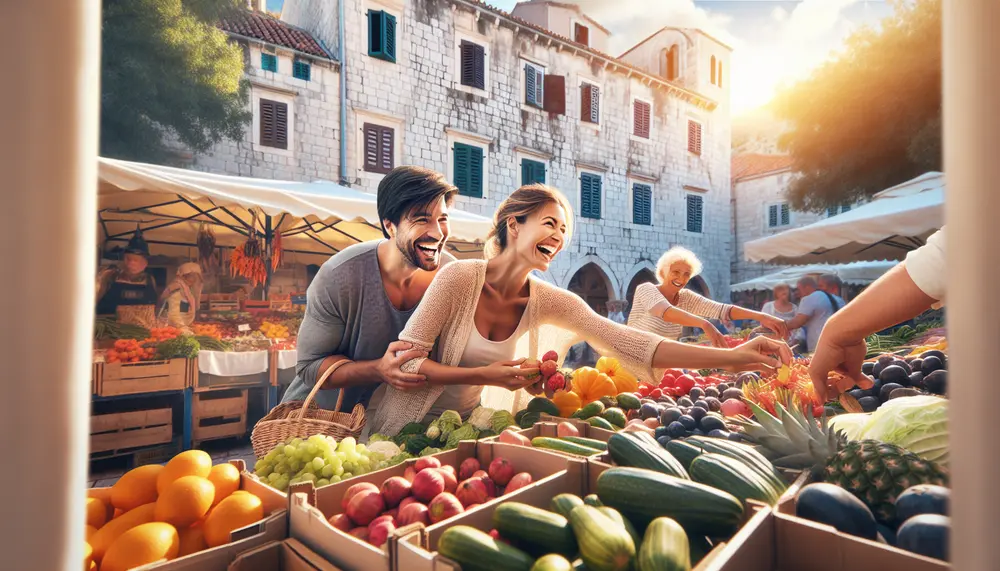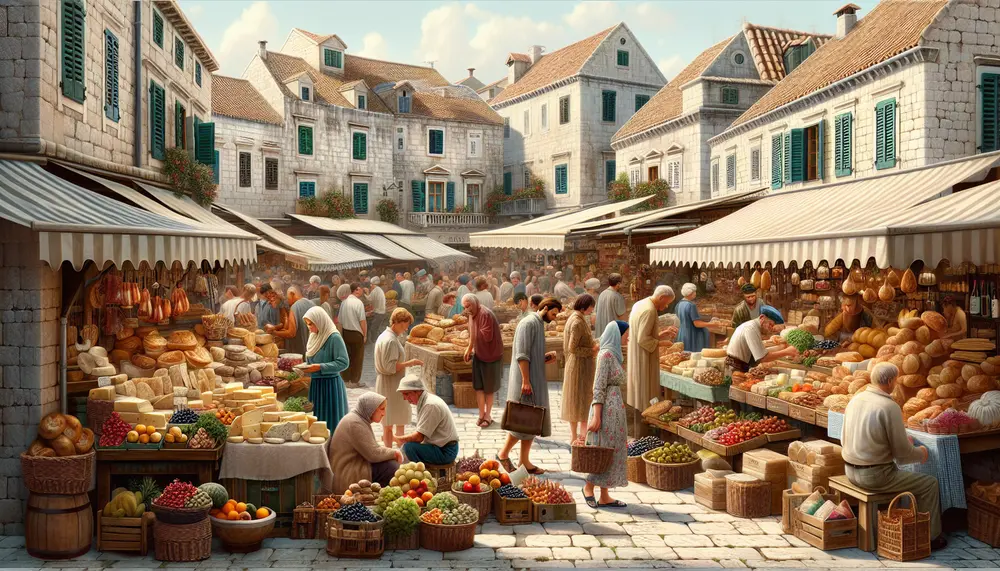Posts on the Topic Croatian Cuisine
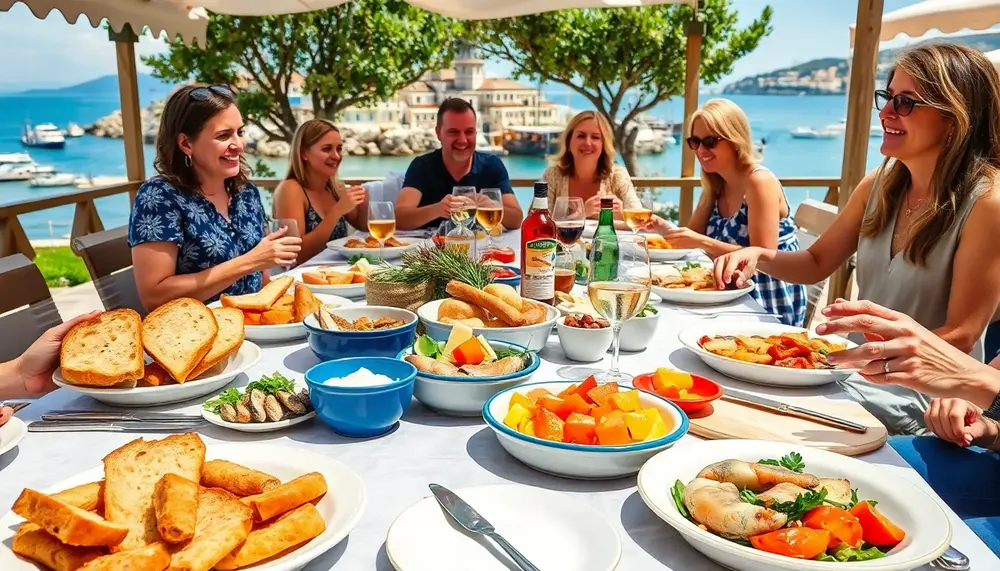
Croatia’s regional dishes reflect its diverse history and culture, with coastal seafood specialties and hearty inland fare offering unique flavors across the country. Signature experiences like slow-cooked peka highlight communal traditions, while local favorites such as brudet showcase culinary creativity...
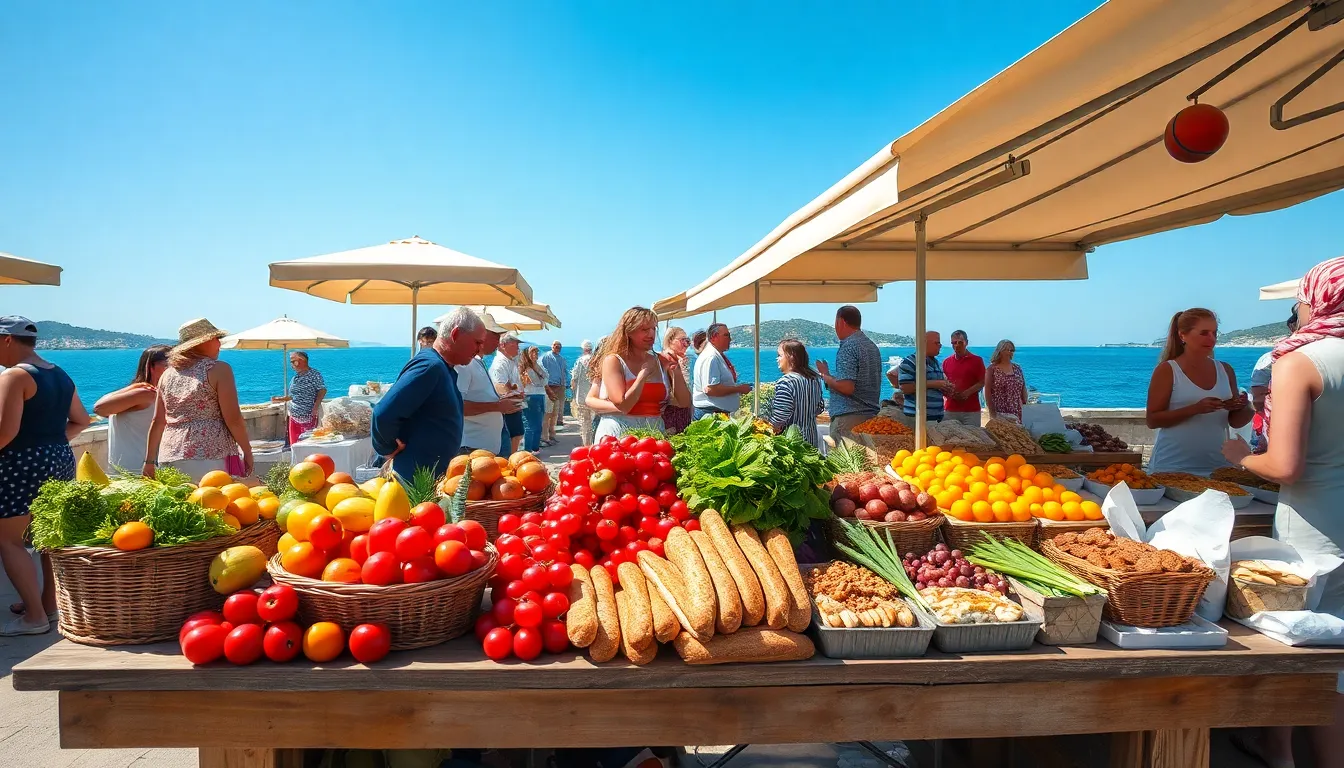
The Croatian food diet blends Mediterranean and continental influences, emphasizing fresh ingredients for health benefits while fostering social connections through shared meals. It incorporates grains, legumes, fruits, vegetables, lean proteins like meat and fish, mindful consumption of fats and processed...
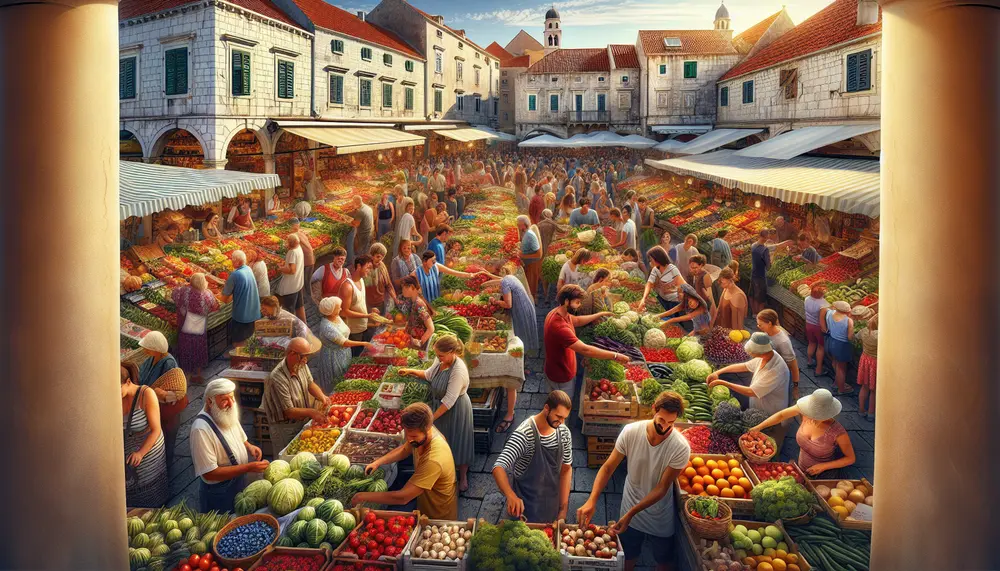
Croatia's culinary landscape blends Mediterranean and Central European influences, offering affordable meals despite recent price increases. The article explores budget-friendly food options across Croatia, highlighting Marenda—a mid-morning meal tradition—and inexpensive restaurants in cities like Zagreb, Pula, and Dubrovnik while also...
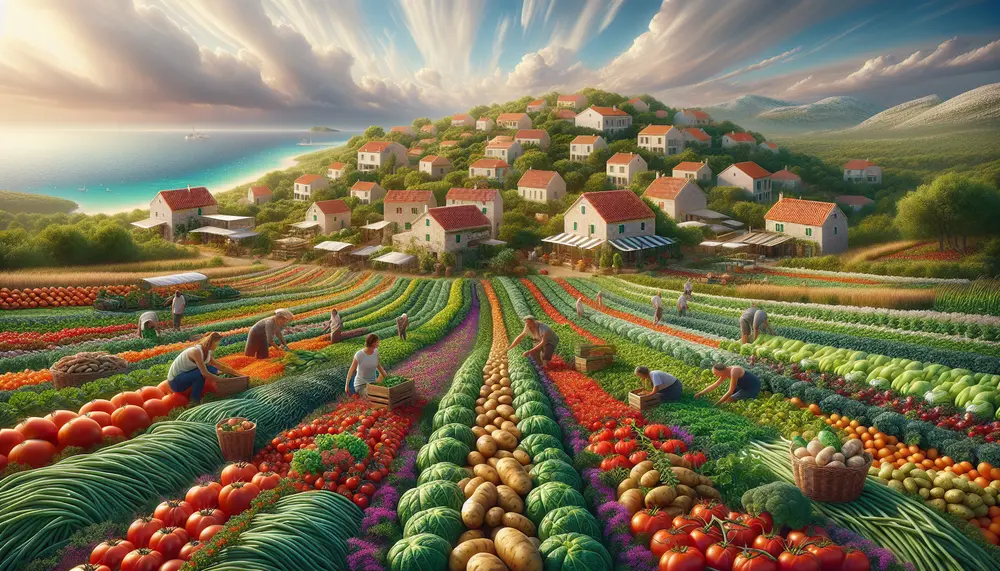
Food security in Croatia is crucial for public health, economic stability, and social harmony, with significant progress made but challenges like poverty, reliance on imports, low agricultural productivity, workforce issues, and climate change persisting. Government initiatives include reforms in social...
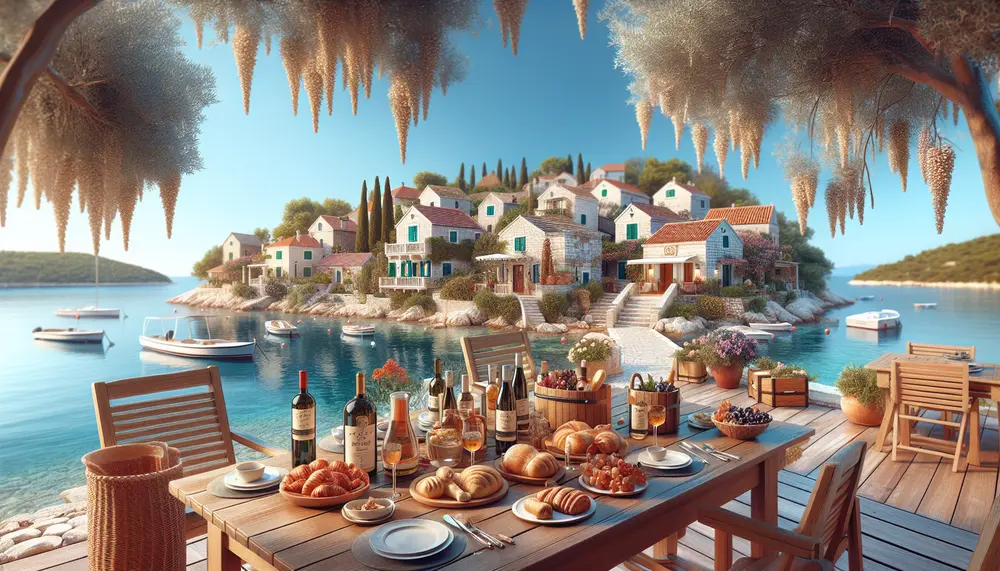
Croatia's culinary heritage is a blend of diverse influences, from Roman viticulture to Ottoman spices and Austro-Hungarian pastries, resulting in a vibrant food scene that combines Mediterranean freshness with Central European heartiness. Each region offers unique specialties like Dalmatia’s seafood...
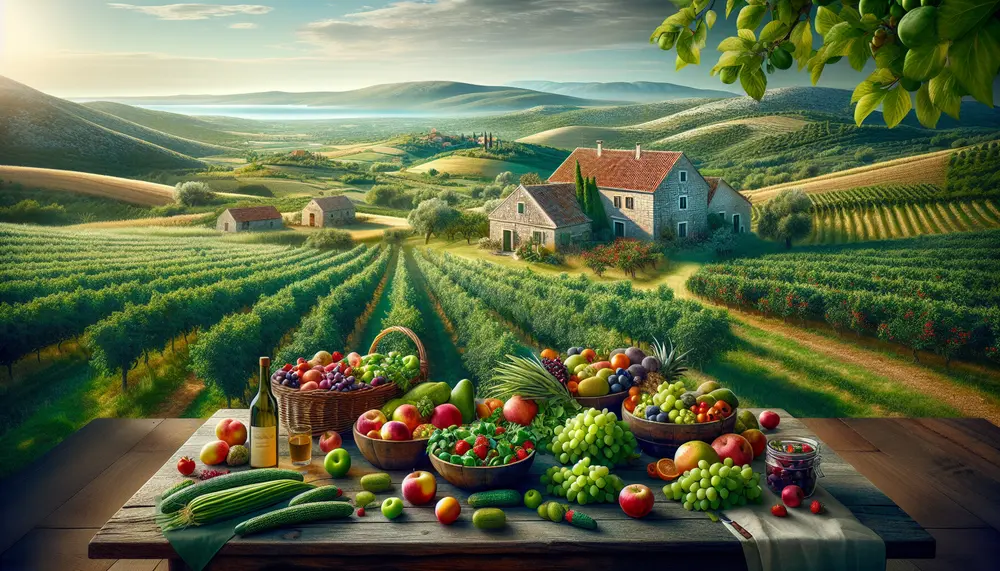
Croatia's agricultural sector, enriched by its diverse climate and fertile soil, plays a crucial role in the nation's economy, food security, and cultural heritage. The integration of traditional farming methods with modern technological advancements enhances productivity while promoting sustainability and...
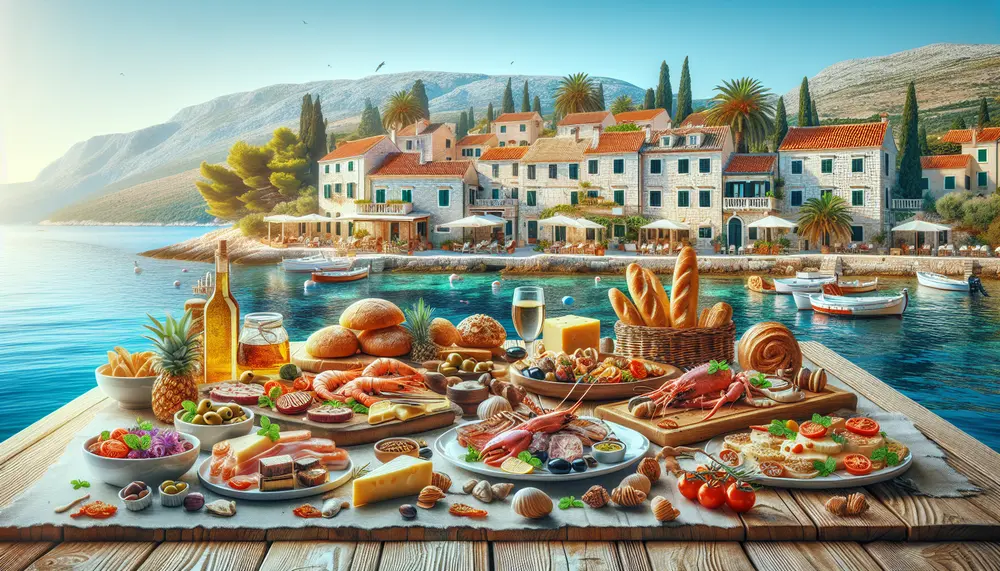
A Croatia food tour offers an immersive experience into the country's rich culinary traditions, featuring visits to local markets, traditional restaurants, and cooking classes. Highlights include sampling authentic dishes like black risotto and pasticada in Dubrovnik, exploring regional specialties such...
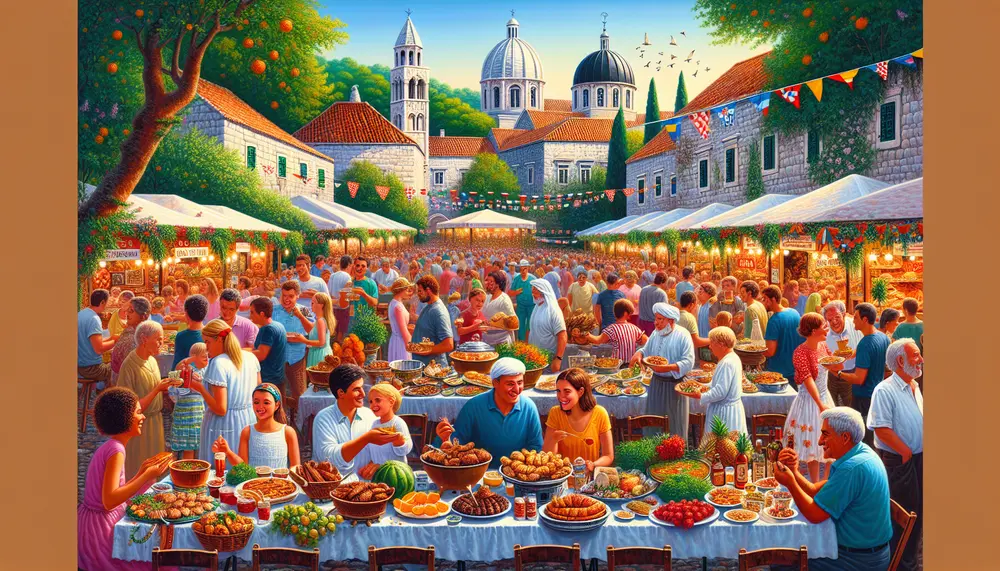
Croatia's food festivals celebrate its diverse culinary heritage, offering unique experiences like live cooking demonstrations, masterclasses, and local markets. Notable events include the Weekend Food Festival in Rovinj with top chefs and gourmet treats; Dubrovnik’s Good Food Festival featuring Restaurant...
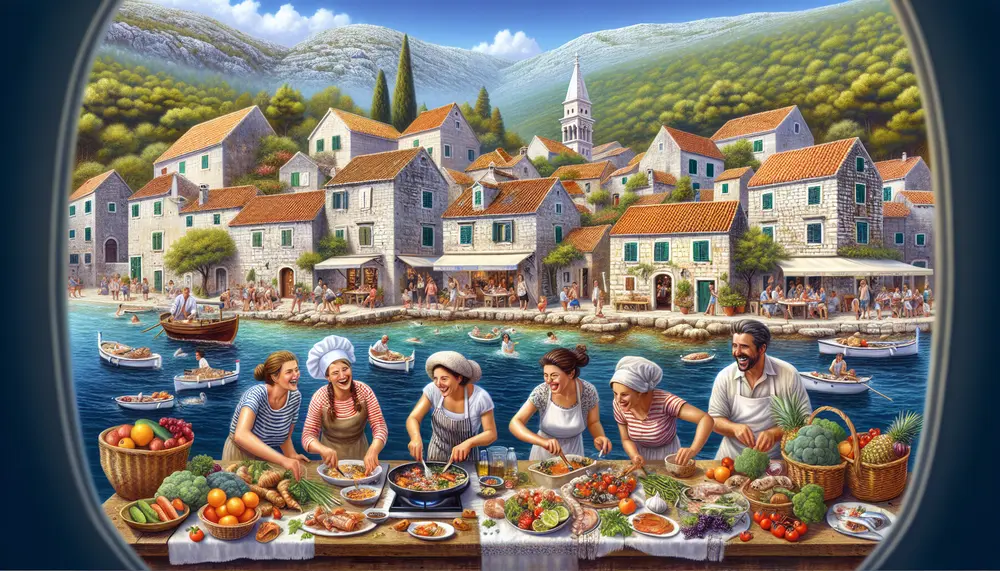
Croatian cuisine is a rich blend of Mediterranean, Central European, and Balkan influences, featuring dishes like pašticada and crni rižot. Enrolling in a Croatian culinary school offers hands-on training with local ingredients, expert guidance from experienced chefs, cultural immersion, networking...

The Croatia Food Pyramid promotes balanced eating by emphasizing grains, fruits, vegetables, proteins, and dairy while encouraging moderation of fats and sweets. It reflects local culinary traditions and health guidelines to foster healthier dietary choices among citizens....

Croatia’s regional dishes reflect its diverse history and culture, with coastal seafood specialties and hearty inland fare offering unique flavors across the country. Signature experiences like slow-cooked peka highlight communal traditions, while local favorites such as brudet showcase culinary creativity...

Grilling in Croatia is a cherished tradition that fosters community and identity, with signature dishes like ćevapčići, ražnjići, and pljeskavice prepared using authentic techniques. The ritual blends old and new customs, bringing people together over smoky flavors and vibrant side...

Embark on a culinary journey through Croatia's regions, each offering unique flavors and stories; from Istria's pasta and stews to Dalmatia's seafood delights, every dish is a celebration of tradition....

The Croatian food diet blends Mediterranean and continental influences, emphasizing fresh ingredients for health benefits while fostering social connections through shared meals. It incorporates grains, legumes, fruits, vegetables, lean proteins like meat and fish, mindful consumption of fats and processed...

Food inflation in Croatia, driven by factors like supply chain disruptions and rising production costs, has significant impacts on households' purchasing power and the broader economy. This persistent issue necessitates strategic responses to manage its effects on consumer spending patterns,...

The food retail scene in Croatia is diverse, featuring a mix of international chains and local markets that offer unique cultural experiences with regional products. Major supermarkets like Konzum, Plodine, Lidl, Kaufland, Spar, and Studenac each provide distinct advantages such...

Croatia's culinary landscape blends Mediterranean and Central European influences, offering affordable meals despite recent price increases. The article explores budget-friendly food options across Croatia, highlighting Marenda—a mid-morning meal tradition—and inexpensive restaurants in cities like Zagreb, Pula, and Dubrovnik while also...

Croatia is a hidden gem for food lovers, offering a unique blend of flavors influenced by neighboring countries like Italy and Hungary. The Istrian Peninsula stands out with its truffles, olive oil, seafood, and vibrant wine culture; while traditional delicacies...

When visiting Croatia, you can bring home unique food souvenirs such as traditional sweets like Licitars and Bajadera, premium olive oil, local wines and spirits including Plavac Mali and Rakija, savory delights like truffles from Istria and Pag cheese, as...

Croatia offers a rich culinary experience influenced by its diverse history and geography, featuring unique regional specialties from hearty meat dishes to delicate seafood. Highlights include wine tours in regions like Istria and Dalmatia, cooking classes with expert chefs, gourmet...

The Croatian government has introduced a food price cap on 30 essential supermarket products from September 18 to December 31, aiming to combat rising costs and provide financial relief. This measure ensures affordability of basic necessities like rice, pasta, milk,...

Croatian desserts are a delightful blend of Italian, French, Austrian, and Turkish influences that tell stories of tradition and celebration. This article highlights beloved Croatian treats like Cherry Strudel, Madjarica cake, Fritule doughnuts, Orehnjača walnut roll, and Kremšnita custard cream...

Food security in Croatia is crucial for public health, economic stability, and social harmony, with significant progress made but challenges like poverty, reliance on imports, low agricultural productivity, workforce issues, and climate change persisting. Government initiatives include reforms in social...

Croatia's food industry is rich in tradition, innovation, and quality with key players like Agrokor, Dukat, Fortenova Group, and Podravka driving the sector. These companies emphasize sustainability, modernization, and high-quality products to cater to both local and international markets while...

Cooking cream is a staple in Croatian kitchens, enhancing the flavor and texture of various dishes from traditional recipes like štrukli to modern culinary creations. Its high-fat content ensures a smooth consistency, making it popular for savory stews, soups, and...

Food allergies occur when the immune system mistakenly identifies a harmless food protein as a threat, triggering reactions that can range from mild to life-threatening. Managing food allergies while traveling in Croatia involves careful planning, such as researching local cuisine...

Peka is a traditional Croatian dish made by slow-cooking various meats and vegetables under a bell-like lid, resulting in tender and flavorful meals that reflect Croatia's rich culinary heritage. The preparation involves seasoning the meat, arranging it with vegetables in...

Croatia's culinary scene is a rich blend of tradition and innovation, featuring unique dishes like Istrian truffles, Italian-influenced pasta and desserts, coastal seafood specialties such as brudet and gregada, and regional delights like Dalmatia’s pasticada. These diverse offerings reflect the...

Food App Croatia simplifies online food ordering with a user-friendly interface, real-time order tracking, and multiple payment options. It benefits both customers by offering convenience and variety, and restaurants by expanding their reach and streamlining operations....

Traveling to Croatia offers a delightful experience with its stunning landscapes, rich history, and delicious cuisine. However, it's essential to stay aware of potential health risks like food poisoning; this article provides valuable information on recognizing symptoms and preventive measures...

Food waste in Croatia is a significant issue, with each citizen discarding an average of 71 kilograms annually, primarily from households. The Croatian government has implemented various initiatives such as public awareness campaigns and support for food banks to combat...

Croatian cuisine is a rich blend of Mediterranean and Central European influences, featuring fresh seafood, hearty meats, seasonal vegetables, olive oil, herbs, homemade bread and pastries. Top recipes to try include Potatoes with Salmon, Honey Liqueur, Zagreb Plaits, Celeriac Salad,...

Croatian cuisine is a rich blend of Mediterranean, Central European, and Balkan flavors shaped by the country's geography and history. Traditional dishes like Peka, Ćevapi, Pašticada, Sarma, and Strukli highlight regional specialties while popular food blogs such as Chasing the...

Croatia's culinary heritage is a blend of diverse influences, from Roman viticulture to Ottoman spices and Austro-Hungarian pastries, resulting in a vibrant food scene that combines Mediterranean freshness with Central European heartiness. Each region offers unique specialties like Dalmatia’s seafood...

Croatia's food scene is a diverse culinary journey shaped by its geography and history, offering everything from fresh seafood along the coast to hearty meat dishes inland. Regions like Zagreb blend tradition with innovation, Slavonia offers robust flavors and freshwater...

Croatia's agricultural sector, enriched by its diverse climate and fertile soil, plays a crucial role in the nation's economy, food security, and cultural heritage. The integration of traditional farming methods with modern technological advancements enhances productivity while promoting sustainability and...

Ensuring food safety in Croatia is vital for both residents and visitors, with the Croatian Food Agency (HAH) playing a key role through scientific risk assessments, data analysis, and international collaboration. Key regulations aligned with EU standards include the Food...

A Croatia food tour offers an immersive experience into the country's rich culinary traditions, featuring visits to local markets, traditional restaurants, and cooking classes. Highlights include sampling authentic dishes like black risotto and pasticada in Dubrovnik, exploring regional specialties such...

Exploring Croatia's culinary scene offers a rich array of flavors reflecting its diverse regional influences and cultural heritage. This guide provides insights into popular Croatian foods, where to shop for local delicacies, and tips for beginners to enhance their food...

Dubrovnik, known as the Pearl of the Adriatic, offers a culinary paradise with its blend of traditional Croatian dishes and innovative modern cuisine. From fresh seafood to hearty stews like pašticada and unique offerings such as black risotto, Dubrovnik's food...

Croatia's food festivals celebrate its diverse culinary heritage, offering unique experiences like live cooking demonstrations, masterclasses, and local markets. Notable events include the Weekend Food Festival in Rovinj with top chefs and gourmet treats; Dubrovnik’s Good Food Festival featuring Restaurant...

Burek is a traditional Croatian pastry with origins in the Ottoman Empire, featuring thin layers of dough filled with ingredients like cheese, meat, potatoes, spinach, or apples. It has become a staple in Croatian cuisine due to its versatility and...

Croatian cuisine is a rich blend of Mediterranean, Central European, and Balkan influences, featuring dishes like pašticada and crni rižot. Enrolling in a Croatian culinary school offers hands-on training with local ingredients, expert guidance from experienced chefs, cultural immersion, networking...

Croatia's culinary scene is rich and diverse, influenced by its geography and history, offering everything from hearty meat dishes like sarma (stewed pork in pickled cabbage leaves) to fresh seafood specialties such as Dalmatian brodet (fish stew). Vegetarian and vegan...

This guide provides an overview of food and drink prices in Croatia, detailing costs for groceries and dining out based on factors like location, season, and type of establishment. It offers tips to save money by shopping at local markets...

Croatia's rich culinary heritage, influenced by Mediterranean, Central European, and Balkan traditions, emphasizes fresh and seasonal ingredients. A gastronomic tour from September 28 to October 5, 2024, led by expert Mislav Fileš includes exploring Dubrovnik’s food scene and sailing the...

Croatia's culinary scene blends Mediterranean and Central European flavors, offering diverse dishes from fresh seafood on the coast to hearty inland meals. Understanding 2023 food prices—such as bread at 10 HRK (1.33 EUR) or a three-course meal for two in...

The article provides a comprehensive guide on ordering food in Croatia, highlighting the convenience, variety, quality, safety, and flexibility of using top delivery services like Wolt, Glovo, Pauza.hr, Bolt Food, and Donesi.com. It also offers step-by-step instructions for placing an...

Croatian cuisine reflects its rich cultural heritage and diverse landscapes, featuring unique dishes from coastal seafood like Crni rižot (black risotto) to hearty inland stews such as Pašticada. Traditional cooking methods like Ispod Peke (under the bell), grilling, slow cooking,...

Croatian cooking classes offer immersive, hands-on experiences that teach participants about the country's rich culinary heritage through traditional recipes and local ingredients. These classes cater to all skill levels and often include market tours, wine pairings, and cultural insights led...

Croatia offers a rich variety of vegetarian cuisine, utilizing fresh, local ingredients and seasonal produce to create flavorful dishes. Traditional Croatian meals like Sarma, Peka, Žganci, Punjene Paprike, and Fritule have been adapted for vegetarians, while numerous restaurants across the...

Exploring traditional Croatian cuisine reveals a rich tapestry of flavors and techniques deeply rooted in local traditions, ingredients, and history across various regions. Signature dishes like Pešti i mliječi, Sarma, Zagorski Štrukli, Brodet, and desserts such as Rozata highlight the...

In Croatia, the adaptation of halal food standards has fostered an inclusive environment for Muslim travelers, with local restaurants and producers pursuing halal certification to cater to their dietary needs. This effort enhances Croatia's appeal as a culturally sensitive destination,...

Croatia is increasingly accommodating gluten-free dietary needs, with cities like Zagreb, Split, and Dubrovnik offering a variety of dining options that include specialized menus and certified eateries. Travelers can utilize local terms such as 'Bez glutena', apps, and online platforms...

Croatian cuisine is a diverse blend of regional flavors and influences, offering everything from hearty continental dishes to light coastal seafood specialties. Each dish not only showcases local ingredients and traditional cooking methods but also reflects Croatia's rich cultural heritage...

Croatia's culinary landscape is richly diverse, reflecting its complex history and geographical variety. From the fresh seafood of the Dalmatian coast to the hearty meat dishes of continental regions, each area showcases unique flavors and cooking traditions influenced by Mediterranean...

Croatian cuisine is a diverse blend of Mediterranean and Central European flavors, shaped by the country's geographical diversity from fertile plains to its Adriatic coast. Signature dishes like Ćevapi, Sarma, and Skampi na buzaru highlight local ingredients and traditional cooking...

Croatian gastronomy is a vibrant blend of regional flavors and historical influences, offering a diverse culinary landscape from hearty inland dishes to delicate coastal seafood. The cuisine not only showcases local ingredients and traditional cooking methods but also reflects Croatia's...

Exploring Split, Croatia's culinary scene reveals a diverse array of flavors influenced by its Adriatic Sea location and varied historical rulers. The guide details local staples like fresh seafood, olive oil, cheeses, cured meats, and traditional dishes such as Pašticada...

Understanding food prices in Croatia is crucial for budget travelers, with costs varying by location and dining type. Meals are generally cheaper than Western Europe; local markets offer fresh ingredients at low prices, street food provides economical yet tasty options,...

Exploring Croatian meat dishes reveals a deep cultural and historical significance, with each region offering unique flavors shaped by local spices, herbs, and cooking methods. Iconic dishes like Ćevapi, Peka, and Kulen highlight the diversity of Croatia's culinary heritage, reflecting...

Croatian cuisine is a diverse blend shaped by Mediterranean, Central European, Eastern European, and Ottoman influences due to Croatia's strategic location along the Adriatic Sea. This culinary diversity reflects regional variations from seafood-rich coastal diets in Dalmatia to hearty meat...

Croatian cuisine reflects the country's diverse geography and cultural history, offering a variety of flavors from fresh seafood along the Adriatic coast to hearty meat dishes in continental regions. Key ingredients like olive oil, garlic, and paprika enhance traditional recipes...

Croatia's extensive Adriatic coastline is renowned for its diverse and high-quality seafood, integral to local cuisine and culture, with a strong commitment to sustainable fishing practices ensuring future availability. The journey of Croatian fish from sea to table involves meticulous...

Understanding food expenses in Croatia is crucial for budgeting during trips or long-term stays, with costs varying by location and dining choices. Key factors affecting these expenses include economic conditions, seasonal availability of produce, local policies, and global market trends;...

The popularity of food delivery services in Croatia has surged due to the convenience, variety, and technological advancements that cater to modern lifestyles and preferences. This growth is further fueled by increased smartphone usage, internet access, and changes brought about...

Croatian cuisine reflects its geographical diversity and historical influences, offering a unique blend of flavors from Central Europe to the Mediterranean. It features fresh local ingredients like olive oil, seafood, and herbs in both traditional dishes passed down through generations...
Top 10 posts in the category
Unsere Beiträge zum Thema Croatian Cuisine
Entdecken Sie die Reichtümer der Croatian Cuisine, einer kulinarischen Tradition, die so vielfältig und verführerisch ist wie die landschaftliche Schönheit Kroatiens selbst. Tauchen Sie ein in die Welt der mediterranen Aromen und erfahren Sie, wie die Küste und das Hinterland mit ihren frischen Zutaten die croatian cuisine prägen.
Croatian Cuisine bietet nicht nur ein unvergessliches Geschmackserlebnis, sondern auch eine Reise durch die Geschichte und Kultur des Landes. Die hier veröffentlichten Artikel enthüllen die geheimen Zutaten und Kochtechniken, die traditionelle kroatische Rezepte zu einem Fest für die Sinne machen. Ob Sie alles über die berühmten Meeresfrüchtespezialitäten der Adriaküste lernen oder sich in die Welt der herzhaften Gerichte des kontinentalen Kroatiens vertiefen möchten – hier finden Sie wertvolle Informationen.
Mit jedem Artikel über Croatian Cuisine, den Sie lesen, erweitern Sie Ihr Wissen und bereichern Ihre Kochkünste. Stellen Sie sich vor, wie Sie Freunde und Familie mit authentischen kroatischen Delikatessen beeindrucken können. Vom köstlichen Cevapcici bis zum unwiderstehlichen Pasticada, unsere Inhalte ermöglichen es Ihnen, die Essenz der kroatischen Gastfreundschaft und Lebensfreude auf Ihren Teller zu bringen.
Versäumen Sie nicht die Gelegenheit, die Croatian Cuisine in all ihren Facetten zu erkunden. Von traditioneller Hausmannskost bis zu exquisiten Gourmetgerichten, die in dieser Kategorie präsentierten Artikel sind eine unverzichtbare Quelle für jeden, der sich mit der Kunst der kroatischen Küche vertraut machen möchte. Ihre kulinarischen Abenteuer beginnen hier!
